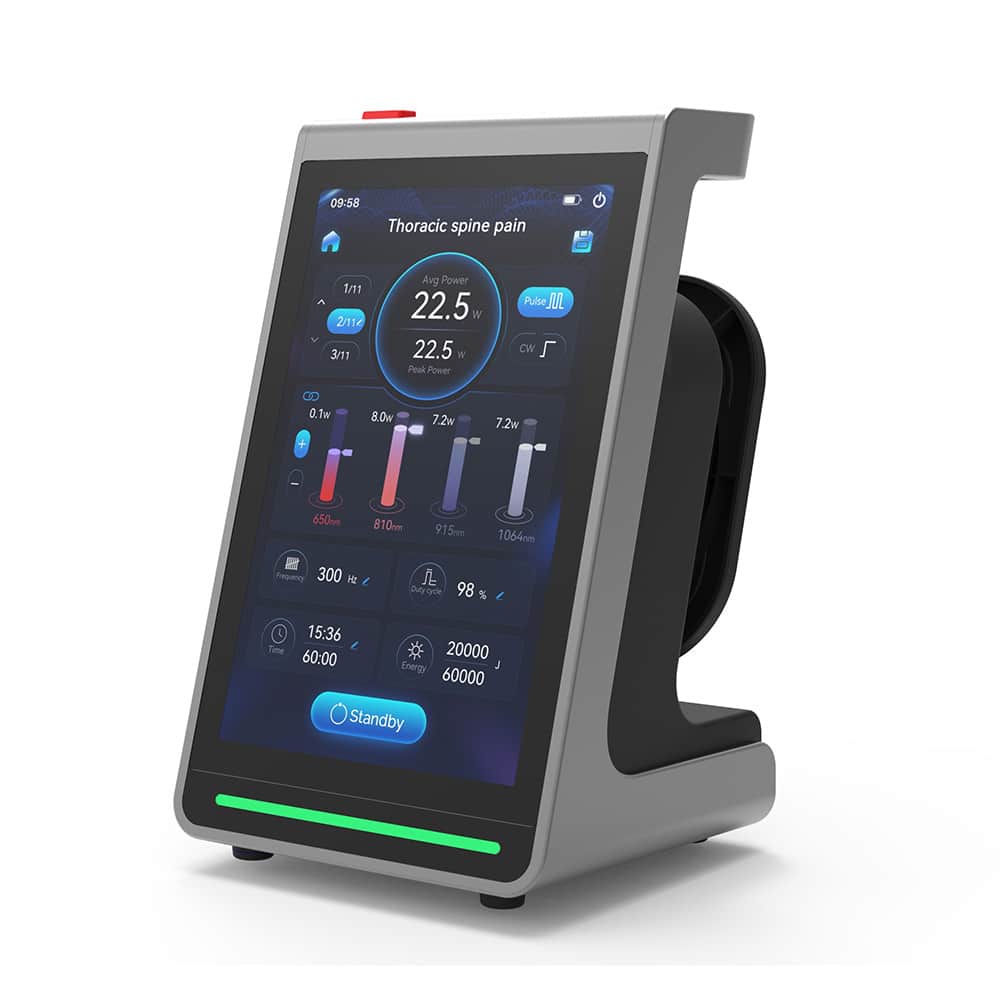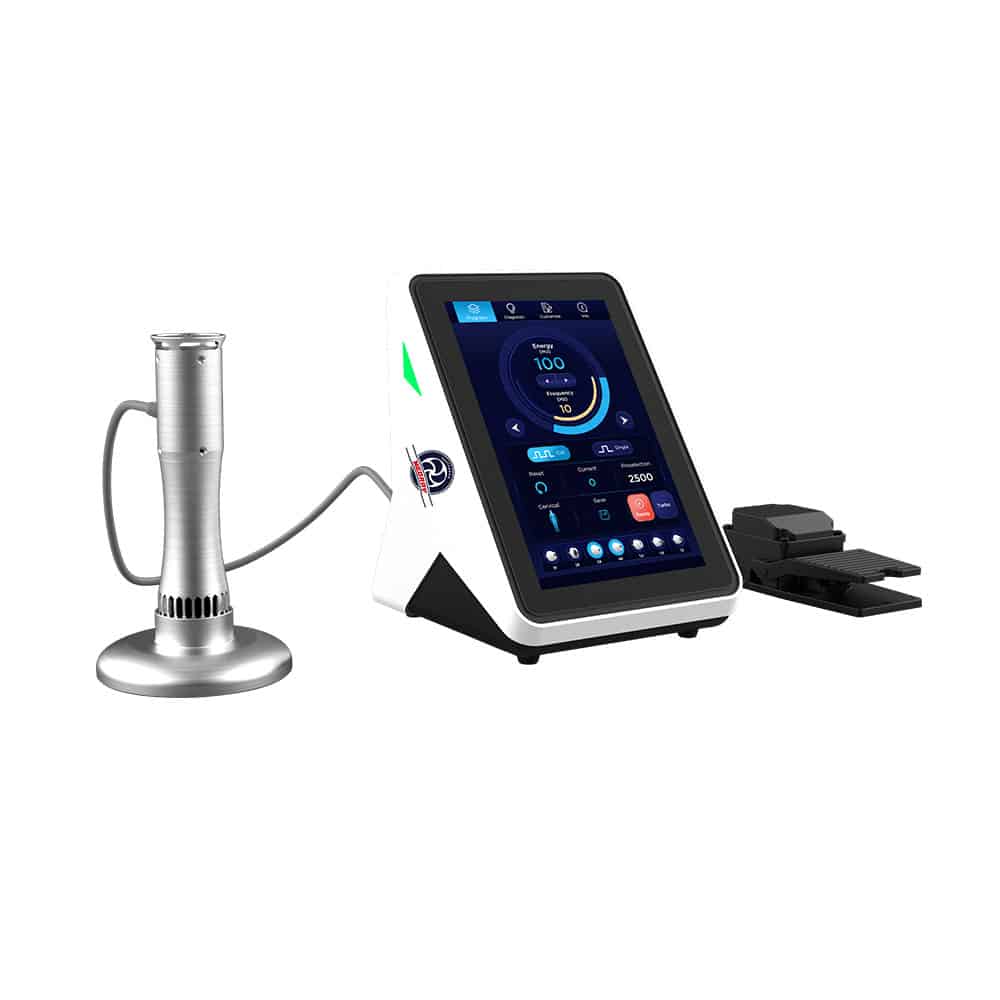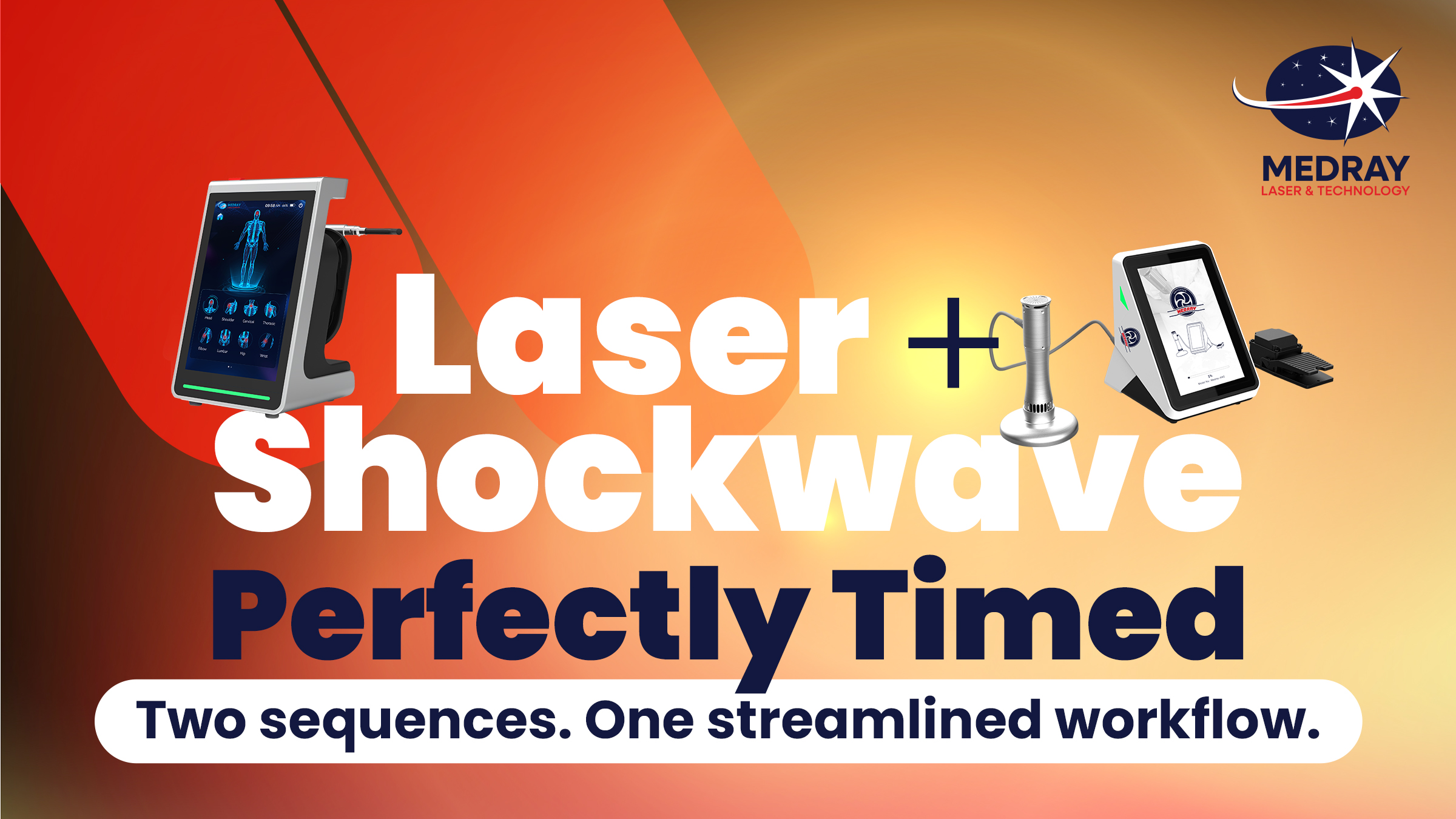Why Combine Laser and Shockwave in the First Place?
In modern rehabilitation and pain management practices, clinicians face two constant pressures: time and clarity. Each visit must stay on schedule, and every intervention should fit seamlessly into the treatment plan without creating bottlenecks.
Laser therapy and shockwave therapy are both well-established tools with FDA-cleared indications for increasing circulation, stimulating tissue, and providing temporary pain relief. While each has distinct mechanisms, their combined use in carefully chosen sequences allows clinicians to address both focal and regional presentations in a streamlined manner.
But here’s the key: combination care must remain compact and repeatable. Sessions should not stretch appointment times, nor should they create role confusion for staff. The right integration strategy ensures each sequence adds value while protecting the clinic’s flow.
What Are the Two Core Sequences That Work in Clinics?
1. Sequence 1: Shockwave → Laser
- When to use: For focal tendon presentations where there is a specific localized site of sensitivity, but surrounding tissues are also somewhat irritable.
- Why it works: Shockwave delivers a mechanical, targeted stimulus that challenges the tissue directly at the site of dysfunction. Following up with laser therapy provides a regional, non-contact input that supports comfort and helps patients tolerate the session.
Clinical Example:
- A runner with chronic Achilles tendon pain presents with tenderness at the mid-tendon.
- Apply a short, targeted shockwave protocol (8–10 minutes).
- Re-test with a single-leg decline squat.
- If sensitivity limits loading progression, follow with a brief (6–8 minute) regional laser application to support adherence and recovery.
- Document changes in pain and performance, then move forward with graded exercise.
2. Sequence 2: Laser → Shockwave
- When to use: For highly irritable presentations, especially where tolerance is low and a gentler entry is necessary.<.li>
- Why it works: Laser provides a non-contact, broadly applied input that helps modulate sensitivity before applying the more focal mechanical load of shockwave.
Clinical Example:
- A carpenter with lateral elbow pain has significant irritability and struggles with grip even at low loads.
- Start with a brief laser protocol using standardized presets.
- Re-test grip strength or a functional lift.
- If tolerance has improved, add a short, targeted shockwave stimulus to the extensor origin.
- Record time-in/time-out and rationale in the patient’s chart.
How Long Should These Sessions Take?
Dual modality therapy doesn’t mean doubling time. Each session should remain inside the standard follow-up length, with 8–10 minutes allocated for modality time total (not per modality).
- Laser therapy block: 6–8 minutes (regional, contact-free)
- Shockwave block: 8–10 minutes (targeted, mechanical)
- Total integrated sequence: Compact, typically under 15 minutes, leaving room for manual therapy, exercise progression, or patient education.
This approach ensures predictable scheduling, which reduces stress for clinicians and front-desk staff.
Why Is Functional Re-Testing Non-Negotiable?
No integration strategy is complete without a functional sign to anchor the session. Functional re-testing provides objective feedback to guide decision-making and ensures the added modalities are serving the plan, not driving it.
Examples of re-tests include:
- Grip strength for elbow presentations
- Decline squat for patellar tendon
- Step-down or heel raises for Achilles
- Painful arc for shoulder cases
By selecting one sign in advance, clinicians can say:
- “Today you cleared more degrees before pain.”
- “You hit ten heel raises instead of six.”
This communicates progress in functional terms, which patients find more motivating than general comments like, “It felt a little better.”
How Do You Align Staff Roles for Smooth Integration?
Successful adoption depends on clear delegation and repeatable steps:
- Front desk: Adjust visit length and ensure follow-ups include designated modality time.
- Rehab staff: Prepare the treatment room, presets, and checklists.
- Clinician: Deliver the intervention, supervise re-test, and document outcome.
To make this consistent:
- Post a one-page sequence guide at each station.
- Train staff on both sequences and review after the first week.
- Use a checklist to ensure each step is completed identically across shifts.
This way, any clinician or staff member can deliver the same streamlined experience.
What Are Common Pitfalls in Combination Therapy Care?
Clinics that struggle with integration often run into the same challenges:
- Extending visit lengths unnecessarily — Combination should fit inside existing schedules.
- Trying to apply both modalities to every patient — Not every case requires both. Stick to your criteria (focality and irritability).
- Skipping the re-test — Without measurable feedback, you lose clarity on whether the combination was worth the time.
- Role confusion — When staff are unsure who sets up or documents, delays creep in.
Avoiding these pitfalls keeps integration smooth and sustainable.
How Do You Scale Beyond the First Few Cases?
- Which presentations respond best to each order
- How much time each sequence actually takes in your clinic
- Where the workflow can be improved
- Expand sequences into more visit types
- Adjust the duration of each block
- Train more staff members for broader coverage
How Do Laser and Shockwave Complement Each Other Mechanistically?
While both modalities share FDA-cleared indications, they engage tissue differently:
- Shockwave therapy delivers a mechanical stimulus that is particularly suited for focal tendon issues or localized sites of load sensitivity.
- Laser therapy provides a non-contact photobiological stimulus, supporting circulation, modulating sensitivity, and preparing tissues for graded loading.
By sequencing the two, clinicians can tailor interventions based on the patient’s irritability and focality profile, while remaining inside a standard clinical workflow.
How Does This Impact Patient Experience?
Patients benefit most when progress is communicated clearly. A re-test that shows functional gains—whether it’s extra grip strength, more heel raises, or fewer degrees of painful range—helps patients understand that the session was productive.
From the patient’s perspective:
- Sessions stay predictable in length
- Documentation is clear and consistent
- Progress is framed in functional outcomes, not vague improvements
This improves both satisfaction and adherence, reducing dropout rates.
What’s the Long-Term Payoff for Clinics?
Clinics that implement structured combination care often report:
- Tighter documentation due to re-test consistency
- Improved scheduling predictability with no disruption to follow-up visits
- Better team cohesion since roles and checklists remove guesswork
- Patient loyalty thanks to functional progress communicated clearly
The integration of laser and shockwave is not about “more modalities = more complexity.” It’s about efficient layering that fits into existing workflows.
Explore our Class 4 Lasers and Shockwave Therapy Device
Laser

Explore Medray’s Class 4 Lasers
Shockwave

Explore Softshock 2.0 (RPW)
Solutions for integrated laser and shockwave therapy
Take the next step toward seamless combination care
Medray Laser & Technology manufactures and distributes FDA-cleared medical devices designed to support circulation, tissue stimulation, and pain relief. Our products are intended for use by licensed healthcare professionals. While clinical research and practitioner experience support the use of laser and radial pressure wave (RPW) therapy in various applications, some uses described in this article may be considered off-label and are not explicitly cleared by the FDA. Patients should consult their healthcare provider to determine the best treatment for their individual needs. The information provided in this article is for educational purposes only and should not be considered medical advice or a substitute for consultation with a licensed medical professional.
Educational content is for licensed healthcare providers and may include discussion of clinical uses not cleared by the FDA. Provided for scientific exchange and not intended as promotional.
The FDA has cleared therapeutic lasers and shockwave devices for increasing circulation, tissue stimulation, and pain relief. Some of the use cases described in this article reflect how clinicians may apply shockwave therapy in practice, based on peer-reviewed research. This information is provided for educational purposes only and does not imply FDA clearance or approval for specific conditions.
